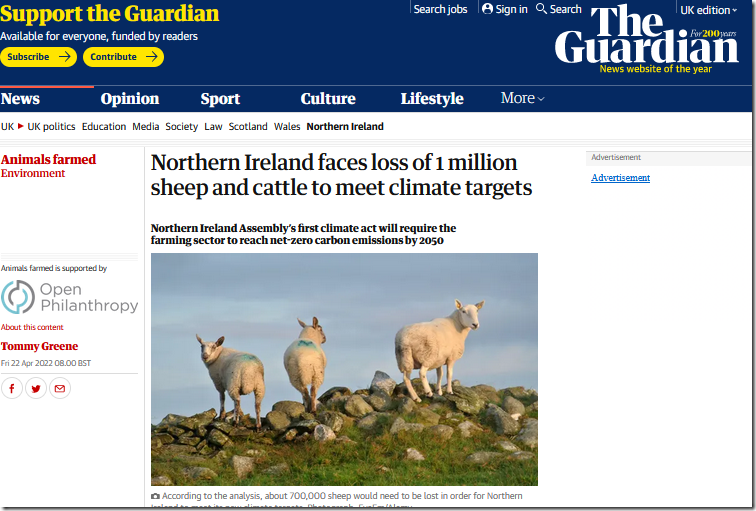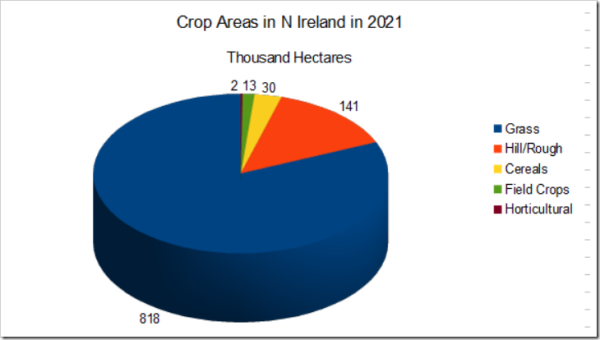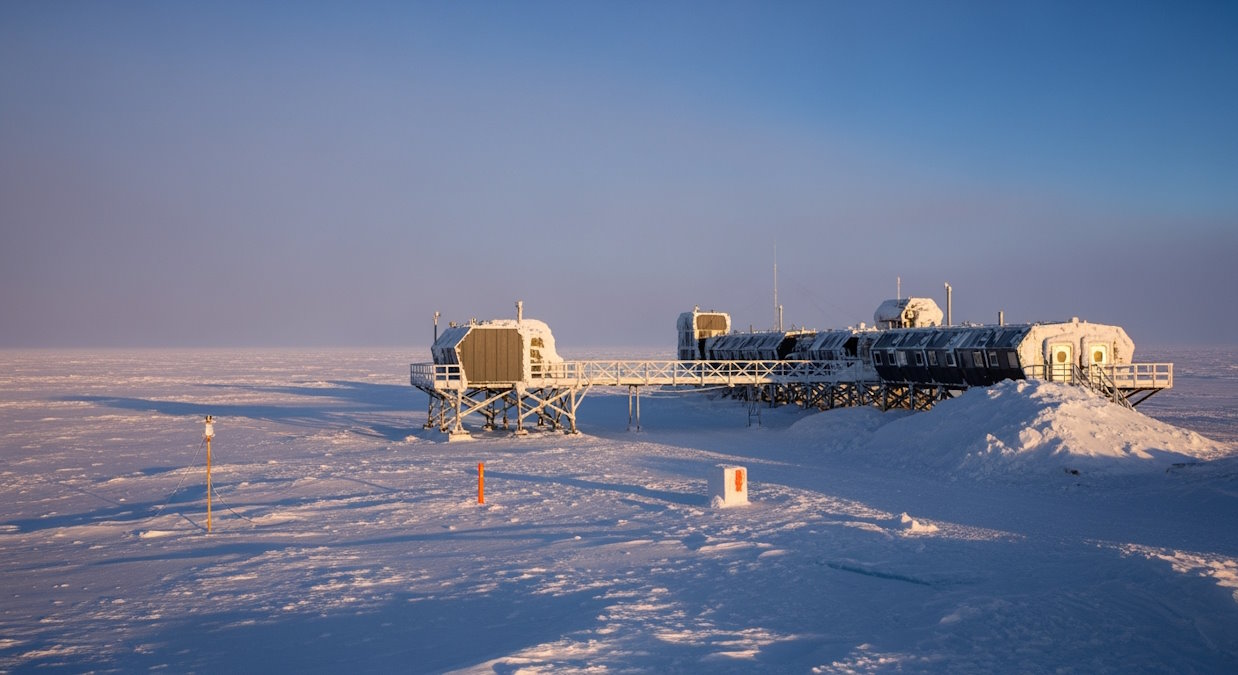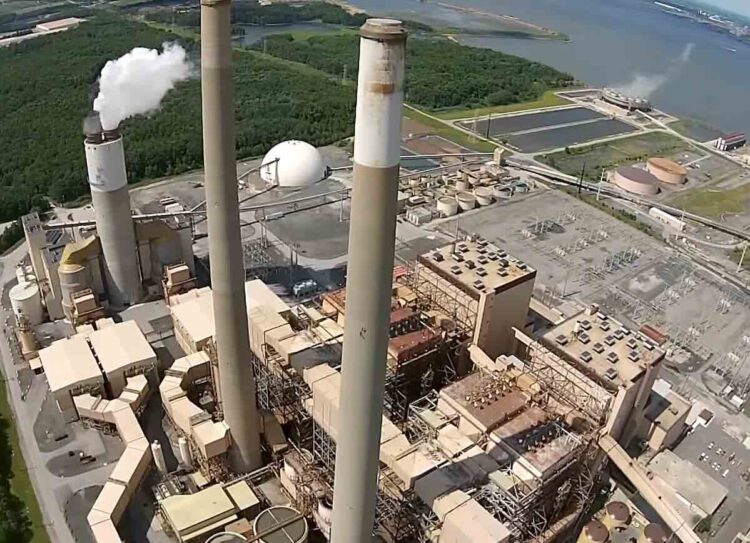
Northern Ireland faces loss of 1 million sheep and cattle to meet climate targets
Not a Lot of People Know That | April 30, 2022
Northern Ireland will need to lose more than 1 million sheep and cattle to meet its new legally binding climate emissions targets, according to an industry-commissioned analysis seen by the Guardian.
The large-scale reduction in farm animals comes after the passing of the jurisdiction’s first ever climate act, requiring the farming sector to reach net-zero carbon emissions by 2050 and reduce methane emissions by almost 50% over the same period.
About a third of human-caused methane emissions come from livestock, mostly from the burps and manure of beef and dairy cattle. Analysis by KPMG, commissioned by industry representatives including the Ulster Farmers’ Union (UFU), estimates more than 500,000 cattle and about 700,000 sheep would need to be lost in order for Northern Ireland to meet the new climate targets.
Separate analysis by the UK government’s climate advisers suggests chicken numbers would also need to be cut by 5 million by 2035. Both the pig and poultry sectors in Nothern Ireland have seen rapid growth in the past decade.
Agriculture accounts for about 27% of Northern Ireland’s greenhouse gas emissions, with the vast majority coming from livestock. Its heavily export-driven meat industry principally supplies Great Britain, but it also exports to China and North America.
Chris Stark, CCC chief executive, told the Guardian that a switch to arable farming would probably be necessary if food production levels are to remain the same in Northern Ireland. “A condition in our modelling is that we produce the same amount of food per head in 2050,” he said. “But it’s very difficult to do this unless you see a change in farming practice, and especially unless you see a shift in arable farming versus livestock.
Not only does agriculture account for a large slice of NI’s emissions (and Ireland’s too), it also accounts for a lot of its GDP, directly and indirectly.
There is a reason why Ireland is dominated by pastoral rather than arable farming. It is because most of the land is unsuitable for growing of crops, certainly to a profitable extent. Much of the land is rocky and the climate is far too wet. That was why Ireland was so reliant on potatoes at the time of the Great Famine.
Currently only 4% of N Ireland’s farmland is arable.

https://www.daera-ni.gov.uk/landing-pages/statistics
Although farm labour only accounts for 7% of the country’s labour force, many more depend on the rural economy. Altogether the rural population makes up about 40% of the total in N Ireland. Destroying a large part of farming sector there would be catastrophic for the rural sector. Replacing the meat and dairy sector with, for instance, potatoes would decimate incomes and lead to mass migration out of the countryside.
Perhaps the most shocking part of the Guardian’s report is the reaction of Chris Stark, who is more interested in his modelling than in people’s lives. It also raises the question of just how all of this will be enforced. Farmers certainly are not going to give up willingly.
Shades of the infamous Soviet Land Reforms?



